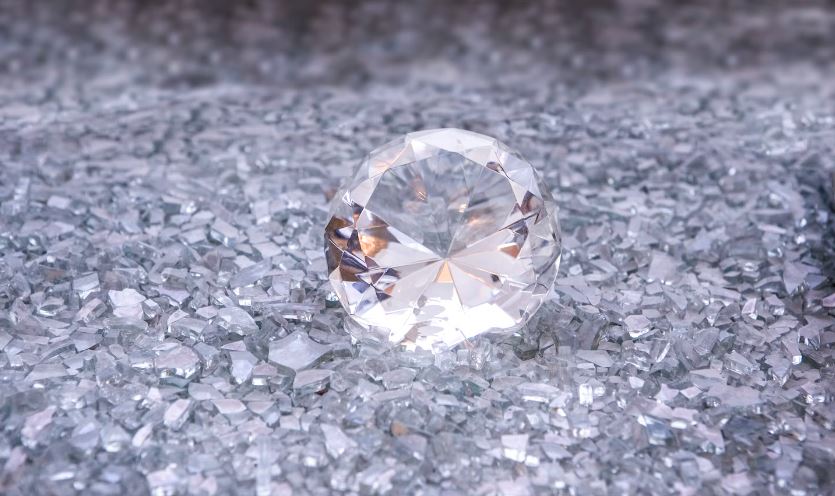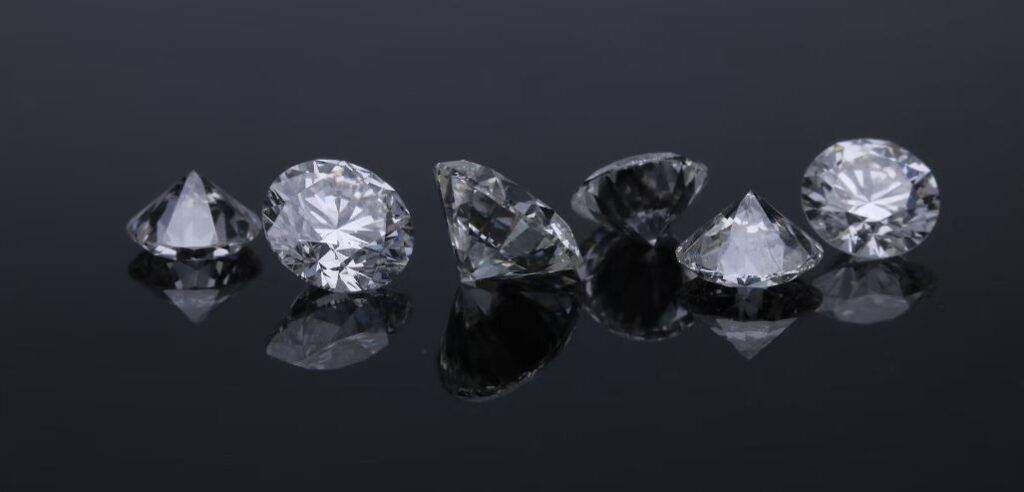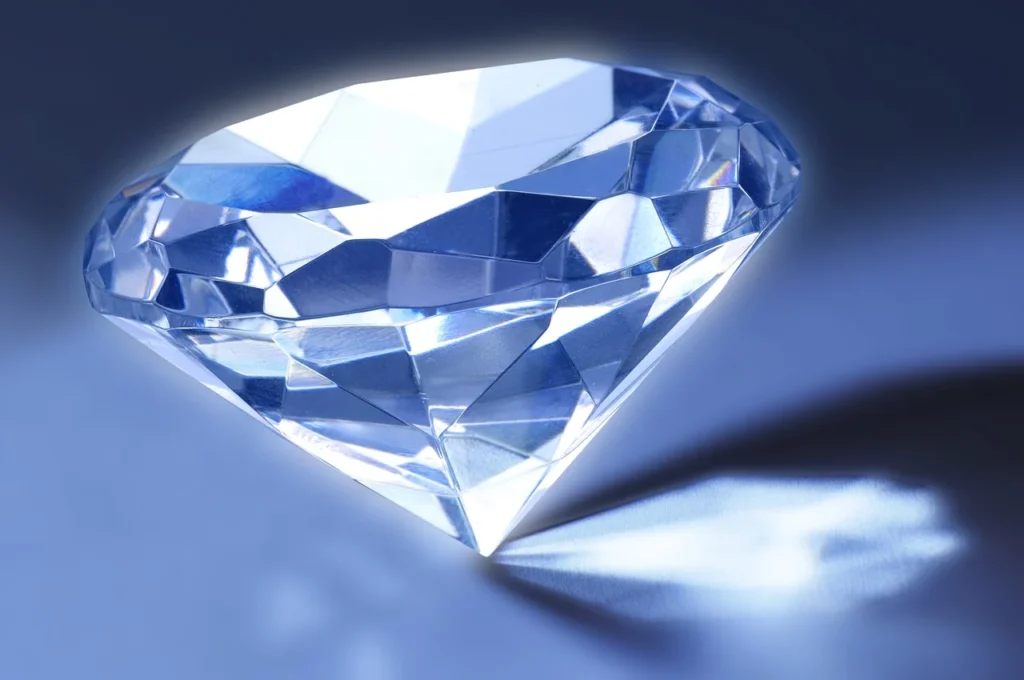Diamonds, with their timeless allure and remarkable sparkle, have captivated human hearts for centuries. These precious gemstones are more than just symbols of love and luxury; they are exquisite examples of nature’s ability to create beauty from the depths of the Earth. At the heart of a diamond’s allure lies its brilliance, a dazzling display of light that seems to dance within its crystal lattice. But what exactly is the science behind diamond brilliance, and why do these gems exhibit such a unique and mesmerizing play of light? In this comprehensive exploration, we will delve deep into the world of diamonds to unravel the secrets behind their radiant allure.
A Gem’s Genesis: The Birth of Diamonds
Before we dive into the science of diamond brilliance, it is essential to understand how diamonds are formed. These precious gems are born deep within the Earth’s mantle, under extreme conditions of heat and pressure. Carbon atoms arrange themselves into a crystal lattice structure, creating the diamond’s characteristic octahedral shape. This process can take billions of years, and the diamonds we see today are brought closer to the surface through volcanic eruptions, in a rock called kimberlite.
The journey from the Earth’s depths to the jewelry store involves cutting, shaping, and polishing the rough diamond. During this transformation, the diamond cutter’s skill plays a crucial role in maximizing the gem’s brilliance by manipulating its facets, angles, and proportions. This human artistry, combined with the inherent properties of the diamond, is what ultimately gives rise to its extraordinary sparkle.
The Role of Refraction and Dispersion
The primary factors behind a diamond’s brilliance are its ability to refract and disperse light. Refraction is the bending of light as it passes from one medium to another, such as from air to the denser medium of a diamond. Diamonds have a high refractive index, which means they slow down and bend light more than most other materials.
When light enters a diamond, it slows down and bends, causing the angle of the light beam to change. This phenomenon is known as the “critical angle.” If the angle at which the light enters the diamond is steeper than the critical angle, the light will be reflected internally and won’t escape the diamond. However, if the angle is shallower than the critical angle, some of the light will exit the diamond, creating the brilliant sparkle we associate with diamonds.
Dispersion, on the other hand, refers to the separation of white light into its component colors. When light enters a diamond, it is dispersed into its spectral colors due to the diamond’s high refractive index. This dispersion creates the famous “fire” of a diamond, where you can see flashes of color as the gemstone is moved under a light source.
The Cut: Unleashing Brilliance
The cut of a diamond is arguably the most critical factor in determining its brilliance. A well-cut diamond allows light to enter, reflect, and refract within the gem in the most efficient and visually appealing way. The proportions and symmetry of the diamond’s facets are carefully crafted to optimize the play of light within the stone.
There are various diamond cuts, with the round brilliant cut being the most popular due to its exceptional brilliance. The round brilliant cut features 57 or 58 facets, each strategically positioned to maximize light performance. Other popular cuts include the princess cut, emerald cut, and cushion cut, each with its unique style and brilliance.
The diamond cutter’s precision is essential in ensuring that the facets are cut at the correct angles and proportions. Even a slight deviation can significantly impact a diamond’s brilliance. Modern technology, such as computer-aided design (CAD) and laser cutting, has improved the accuracy of diamond cutting, resulting in gems that exhibit unparalleled brilliance.
The Role of Inclusions and Flaws
While we often associate diamonds with flawless clarity, the presence of certain inclusions and flaws can also affect a diamond’s brilliance. Inclusions are tiny imperfections or internal features within the diamond, while flaws are surface imperfections. Both can disrupt the path of light within the diamond, scattering or absorbing light instead of allowing it to reflect and refract effectively.
However, not all inclusions and flaws are detrimental to a diamond’s beauty. Some inclusions can create fascinating patterns or reflections that add character to the stone. Additionally, some diamonds are valued for their rarity, such as those with unique internal features like a “star” or “cat’s eye.”
It is crucial to strike a balance between clarity and other factors like cut and carat weight when selecting a diamond. Some inclusions may be so tiny or insignificant that they have minimal impact on the gem’s brilliance, making them excellent choices for those who prioritize size or budget.
Beyond the 4 Cs: Light Performance
In addition to the traditional “Four Cs” of diamond grading (carat weight, cut, color, and clarity), there is a growing emphasis on assessing a diamond’s light performance. Light performance evaluates how well a diamond reflects and refracts light, resulting in its overall brilliance and sparkle.
Several advanced tools and technologies have been developed to measure and analyze a diamond’s light performance. One of the most notable is the Ideal Scope, which provides a visual representation of how a diamond handles light. A well-optimized diamond will show even distribution of red and white light, indicating excellent light return and dispersion.
The ASET (Angular Spectrum Evaluation Tool) is another instrument that assesses a diamond’s performance by analyzing how it interacts with light from various angles. It helps jewelers and buyers understand how a diamond’s facets work together to create brilliance and fire.
The Role of Color in Diamond Brilliance
Diamond color, often referred to as the absence of color, is another critical factor in determining a diamond’s brilliance. The Gemological Institute of America (GIA) grades diamond color on a scale from D (colorless) to Z (light yellow or brown).
The absence of color is desirable in most diamonds because it allows more light to pass through the gem without interference. Colorless or near-colorless diamonds are highly valued for their ability to showcase the full spectrum of brilliance and dispersion. As you move down the color scale towards Z, the presence of color becomes more noticeable, potentially diminishing a diamond’s brilliance.
However, it is essential to note that some diamonds, known as fancy-colored diamonds, have distinct colors such as blue, pink, or yellow. These diamonds are valued for their unique hues and can be exceptionally rare and valuable.
Diamond Fluorescence
Fluorescence is a phenomenon where a diamond emits a visible glow when exposed to ultraviolet (UV) light. Approximately 25% to 35% of diamonds exhibit some degree of fluorescence, with blue fluorescence being the most common. While fluorescence can enhance a diamond’s appearance in certain lighting conditions, it can also have drawbacks.
In some cases, strong fluorescence can cause a diamond to appear hazy or milky under natural sunlight or certain indoor lighting. This phenomenon is more prevalent in diamonds with strong or very strong fluorescence. However, moderate fluorescence can sometimes improve a diamond’s perceived color, making it appear whiter than its actual grade.
The impact of fluorescence on a diamond’s brilliance is a subject of ongoing debate among gemologists and diamond enthusiasts. Ultimately, whether fluorescence enhances or detracts from a diamond’s beauty is a matter of personal preference.
Brilliance and Scintillation: The Dance of Light
Brilliance and scintillation are two distinct aspects of a diamond’s light performance, and they work together to create the gem’s captivating visual effects.
Brilliance refers to the intense brightness that comes from the combination of reflection and refraction of light within the diamond. When light enters a well-cut diamond, it reflects off the facets and is refracted, creating a continuous play of brilliance that can be observed even from a distance.
Scintillation, on the other hand, is the sparkle or flashes of light that occur as a diamond moves. It is the result of light reflecting off different facets and returning to the observer’s eye. Scintillation is what gives a diamond its dynamic, captivating appearance when it is in motion or when the light source or the observer’s perspective changes.
The interplay between brilliance and scintillation is what makes a diamond come alive, and it is one of the reasons why these gems are so treasured. Achieving the perfect balance between these two elements requires expert diamond cutting and an understanding of how light interacts with the stone.
Beyond Natural Light: The Role of Artificial Lighting
The brilliance of a diamond is not limited to natural daylight; it also dazzles under various types of artificial lighting. Jewelers often use specific lighting environments to showcase a diamond’s beauty to its fullest potential.
One of the most commonly used lighting settings is the jewelry store’s display case, where diamonds are typically illuminated with focused spotlights. These spotlights create intense beams of light that enhance a diamond’s brilliance and scintillation, making it appear more dazzling to potential buyers.
However, it is important for consumers to understand that a diamond’s appearance in a jewelry store’s lighting may not always accurately represent its beauty in natural light or everyday settings. To make an informed decision, buyers should view diamonds in different lighting conditions to appreciate their full range of brilliance.
The Future of Diamond Brilliance
As technology and our understanding of optics continue to advance, the world of diamond brilliance is poised for exciting developments. Here are some of the trends and innovations shaping the future of these radiant gems:
1. Advanced Light Performance Analysis:
- Continued development of tools and software for evaluating a diamond’s light performance, allowing buyers to make more informed choices.
- Increased emphasis on light performance as a key factor in diamond grading and pricing.
2. Sustainable Diamond Production:
- Growing interest in sustainable and lab-grown diamonds that offer ethical and eco-friendly alternatives to mined diamonds.
- Exploration of new cutting techniques and designs that maximize brilliance while minimizing waste during diamond cutting.
3. Customization and Personalization:
- Rising demand for customized and bespoke diamond jewelry, driving innovation in diamond cutting to achieve unique brilliance patterns.
- Advances in 3D printing technology enabling the creation of intricate and personalized diamond settings.
4. Artificial Intelligence (AI) and Augmented Reality (AR):
- Integration of AI and AR technologies in the diamond buying process, allowing consumers to virtually experience a diamond’s brilliance and scintillation before purchase.
5. Improved Diamond Identification:
- Advancements in diamond identification techniques to combat issues of fraud and ensure the authenticity of diamonds, bolstering consumer confidence.
Conclusion
The science behind diamond brilliance is a captivating journey that combines nature’s mastery with human ingenuity. From the formation of diamonds deep within the Earth to the expert craftsmanship of diamond cutters, every step of the diamond’s journey contributes to its mesmerizing sparkle. The interplay of refraction, dispersion, cut, and light performance creates a symphony of brilliance and scintillation that continues to fascinate and enchant us. As technology and innovation continue to shape the world of diamonds, we can look forward to even more breathtaking displays of light and crystal in the future, ensuring that these precious gems remain timeless symbols of beauty and elegance for generations to come.




